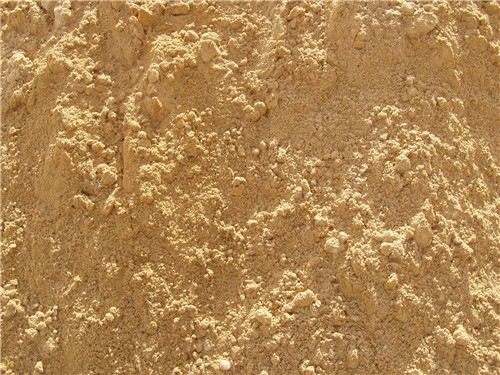Soil is a term that has a very broad definition and refers to a loose layer of earth that covers the surface of the planet. Soil is generated when rocks break up into their constituent parts. A plethora of different forces then work upon the broken up parts of the soil, such as the impact of wind and water and the reaction from salts. Soil has three examples of state: solid soil, soil with air in the pores and soil with water in the pores. Due to the number of different forms of organic and mineral compositions, there are various types of soil that undergoes different environmental pressures.
6 Different Types of Soil
Clay Soil
Clay is one of the many types of soils that are distinguished as soil in which the particles are packed tightly together with each other with little or no air space. Because of this characteristic, clay is the densest and heaviest type of soil. But the clay's density allows the soil to retain and hold large amounts of water and nutrients, while at the same time making hard for moisture and air to penetrate it. Using clay and obtaining successful gardening results depends upon knowing the conditions and state of the soil.
Wet clay is hard to garden with because it is heavy but dry clay is soft and smooth and easy to manage. Keeping this in mind, autumn and spring are the best seasons for clay plantations when the clay is dry. In the winters, to avoid the freezing of clay, you should add mulch or compost to the uppermost layer every autumn season. This added material which is organic will make it easier to plant on clay, while also making air flow and drainage of the soil better.
Silty Soil
Silty soil is extremely smooth and since it retains plenty of water, it is fertile. Despite the good characteristics of this kind of soil, it lacks nutrients compared to other types of soils. If you have silty soil in your garden you should do your best not to walk on it, as that will only compact the soil, leading to the need of aeration. Silty soil is ideal for agricultural use as the particles in silty soil are miniscule.
Loamy Soil
Loamy soil is one of the perfect types of soil because it is a mix of sand, clay, silt and even some humus. The pH level of loamy soil is 6, with high calcium levels and can retain nutrients and water very well. It is also well aerated. The specific composition of loamy soil can vary, but with the right balance of additives, it can be made ideal. If you add compost to loamy soil, it makes up for whatever the soil is lacking.
Sandy Soil
Sandy soils are one of the worst types of soils to grown any kind of plants in. This is because sandy soil has one of the largest particles and that prevents the soil from retaining water, making it hard for the roots of plants to establish.
Peaty Soil
Peaty soil is usually dark brown but it can also be black. The soil has a lot of organic material and is rich in water, which makes it one of the best types of soils for plants. But the soil needs to be drained first. Because of a high water and nutrient content, peaty soil keeps plants healthy even in dry weather and protects the plants from harm in rainy months. The water content of peaty soil is a little acidic but is good for controlling plant diseases and can be used to balance the pH level of other kinds of soils.
Chalky Soil
These kinds of soils are found in limestone beds that have chalk deposits that are deep. This is not an ideal soil for growing plants because it can be hard to work with. Chalky soil has low water content but high lime content, which is why it has a pH level of 7.5. This means that chalky soil is alkali and causes yellow and stunted plants.








View All Comments /Add Comment